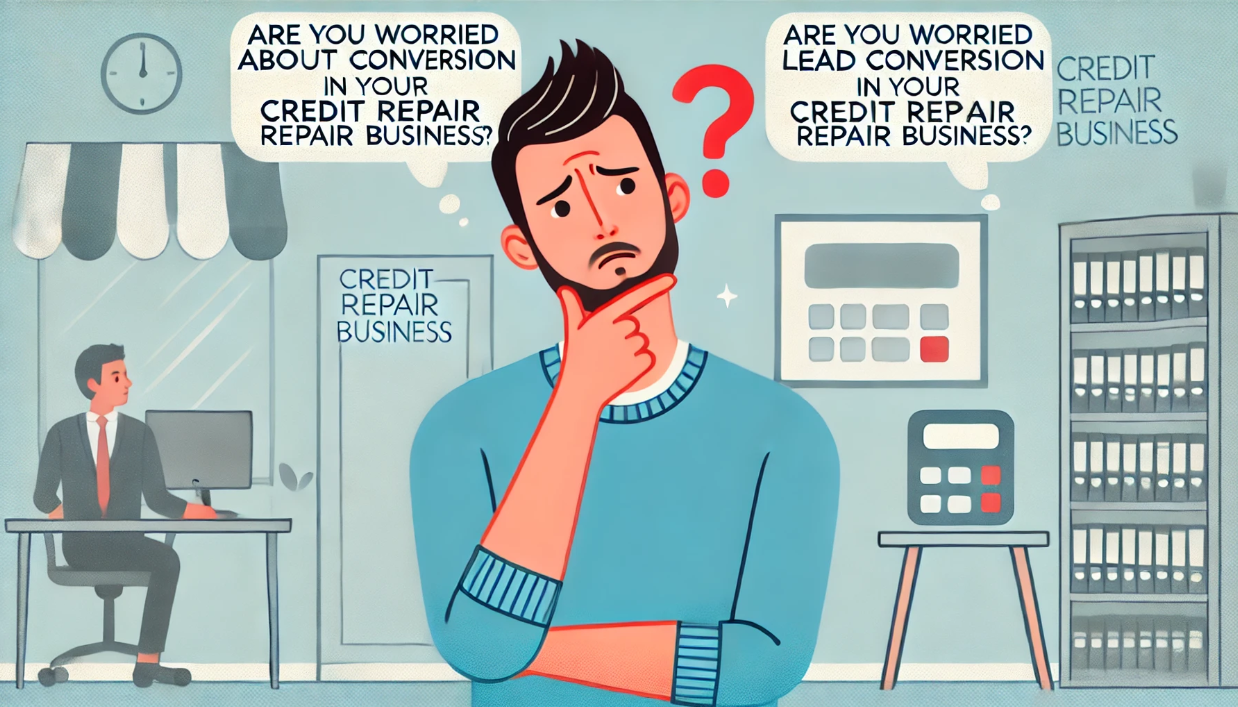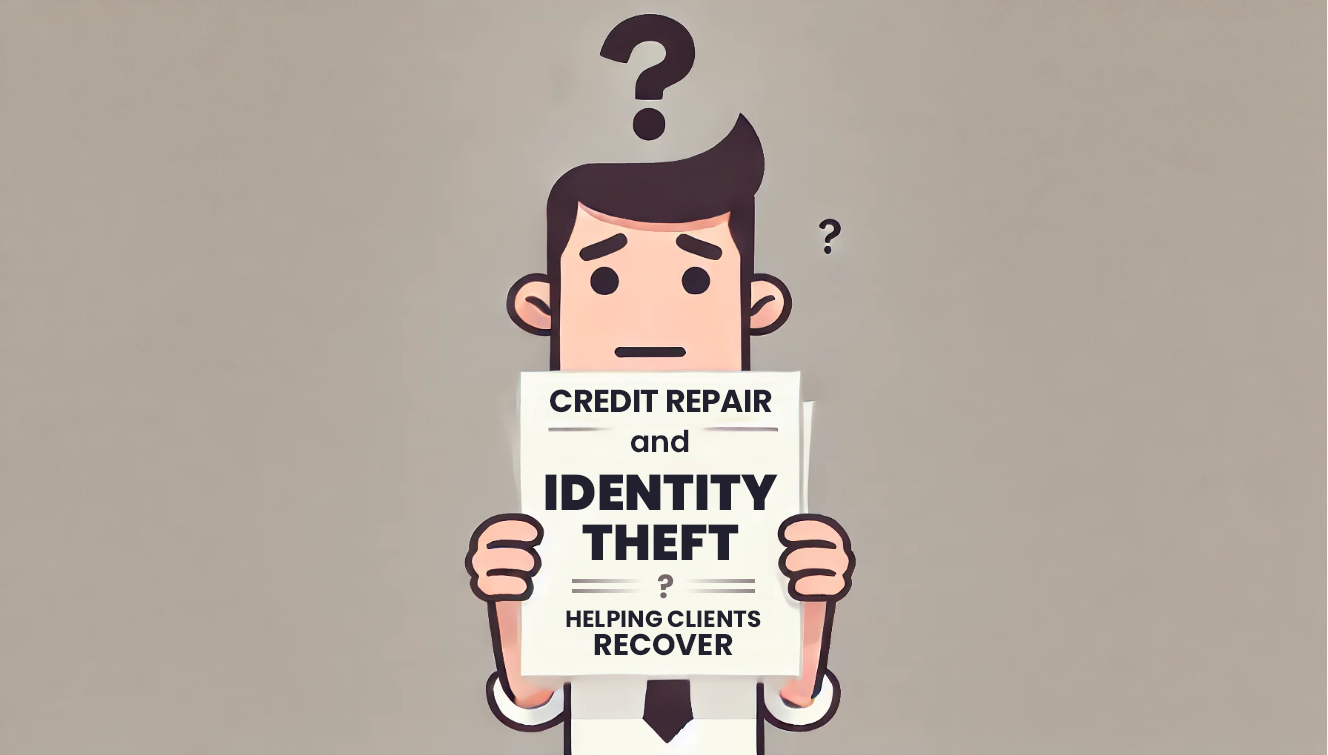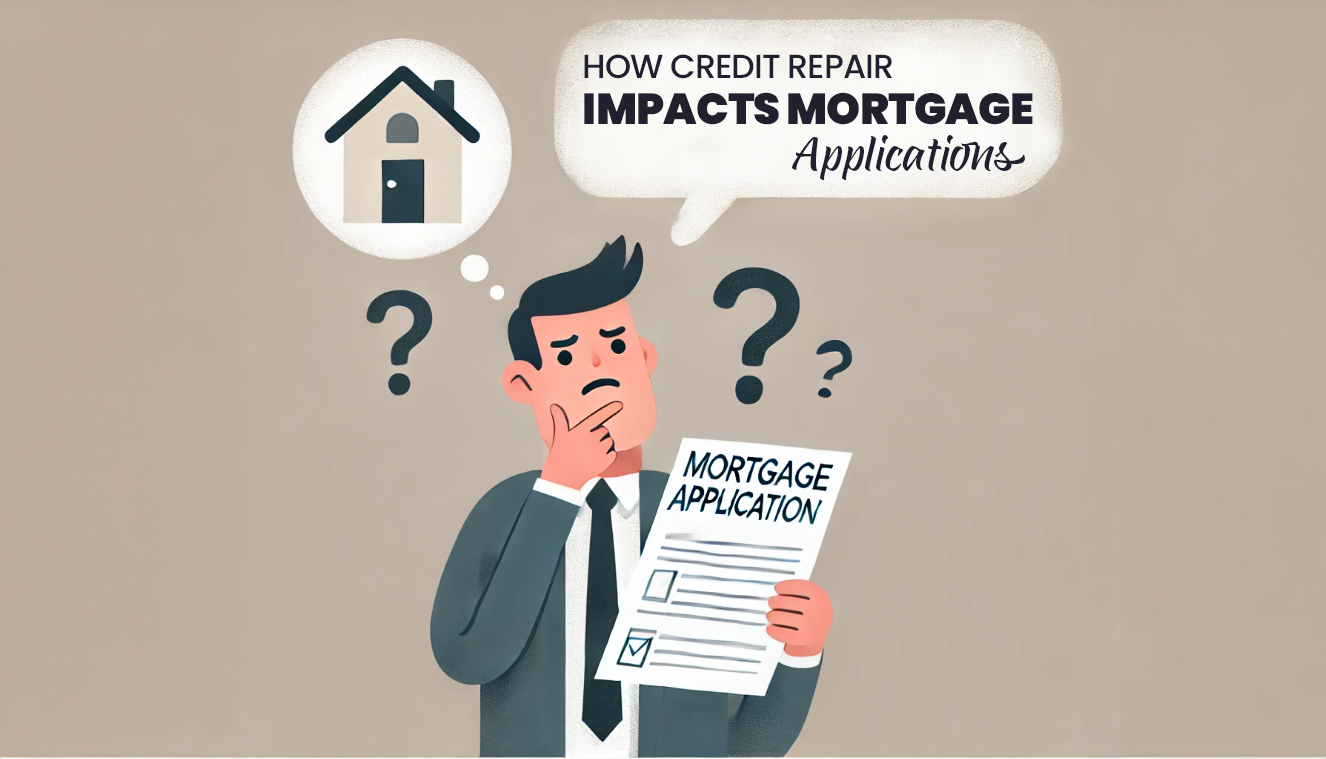Navigating Credit Repair for Clients with Bankruptcy History
For many, bankruptcy represents a crucial turning point—a chance to reset financially and alleviate the burden of overwhelming debt. However, the aftermath of declaring bankruptcy profoundly impacts one’s credit score, presenting significant challenges in regaining financial stability. This is where the role of credit repair becomes critical. Credit repair after bankruptcy isn’t just about improving a numerical score; it’s about restoring financial credibility and enabling future opportunities for those affected.
Credit repair businesses face a unique set of challenges when assisting clients with a history of bankruptcy. The approach varies significantly based on the type of bankruptcy—Chapter 7, Chapter 11, and Chapter 13—each affecting the credit report in different ways. Chapter 7 often results in the liquidation of assets and requires a thorough review of credit reports to ensure discharged debts are reported correctly. Chapter 11, used primarily by businesses to restructure while remaining operational, requires ongoing monitoring and adjustments. While chapter 13 involves creating and following a repayment plan, necessitating updates to credit reports to reflect payments accurately over time.
Understanding these distinctions is crucial for credit repair businesses. Tailoring their strategies to address the specific challenges associated with each type of bankruptcy can better guide their clients toward financial recovery, ensuring that the path to credit restoration is both clear and achievable.
What is Bankruptcy?
Bankruptcy is a legal process designed to help individuals and businesses protect their assets by eliminating all or part of their debt or, in some cases, help them repay a portion of what they owe under the protection of the bankruptcy court. Essentially, it provides a means for those overwhelmed by financial liabilities to either wipe the slate clean by dismissing their debts or reorganizing their financial obligations in a way that makes them manageable. The overarching goal of bankruptcy is not just to protect the assets and relieve the debtor. It also provides a fair distribution to creditors under the debtor’s distressed financial circumstances.
Types of Bankruptcy
The United States Bankruptcy Code offers several chapters under which bankruptcy can be filed, each tailored to different situations and types of debtors. The most used types for individuals and businesses are Chapter 7, Chapter 11, and Chapter 13. Each type has specific implications for the debtor’s financial status and credit history.
Chapter 7 Bankruptcy: Liquidation
-
Purpose and Process:
Chapter 7 bankruptcy, also known as liquidation bankruptcy, is designed to erase most types of unsecured debt. This is the quickest form of bankruptcy and is available to individuals, married couples, corporations, and partnerships. It involves the liquidation of the debtor’s non-exempt assets by a bankruptcy trustee, who then distributes the proceeds to creditors. Note: Certain assets may be protected.
-
Implications for Credit History:
Chapter 7 can remain on an individual’s credit report for up to 10 years. Although it provides relief from debt, the impact on one’s credit score is substantial, and rebuilding credit requires careful planning and consistent financial behavior.
Chapter 11 Bankruptcy: Reorganization
-
Purpose and Process:
Often referred to as reorganization bankruptcy, Chapter 11 is primarily used by businesses but is also available to individuals. This chapter allows the business to remain operational while restructuring its debts. Debtors typically propose a plan of reorganization to keep their business alive and pay creditors overtime. Businesses can change the terms of their debts, including interest rates and amounts owed.
-
Implications for Credit History:
It can also significantly impact credit but allows a business to regain profitability and improve creditworthiness over time through continued operations and compliance with the reorganization plan.
Chapter 13 Bankruptcy: Wage Earner’s Plan
-
Purpose and Process:
Chapter 13 is designed for individuals with a regular income who can pay back at least a portion of their debts through a structured repayment plan. This form of bankruptcy protects individuals from the collection efforts of creditors and allows them to keep their real estate and personal property. It involves creating a plan to repay all or part of the debts over three to five years.
-
Implications for Credit History:
Chapter 13 remains on a credit report for seven years. However, because it demonstrates an ongoing commitment to repaying debts, creditors may view it more favorably than Chapter 7.
The Role of Credit Repair Businesses in Managing Bankruptcy Cases
Credit repair businesses play a crucial role in assisting individuals to navigate the complexities of rebuilding financial stability post-bankruptcy. This process involves a tailored approach starting from an initial assessment, followed by strategic implementation using advanced tools like credit repair business software.
Initial Assessment and Strategy Development
The first step in effective credit repair after bankruptcy involves conducting a detailed assessment of the client’s current financial situation and credit report. This initial review is critical as it sets the foundation for the action plan that will follow.
-
Gathering Detailed Information
The assessment begins with collecting comprehensive details about the client’s financial history, including the type of bankruptcy filed (Chapter 7, Chapter 11, or Chapter 13) and understanding the debts that were discharged as well as those that remain. It’s also important to evaluate the client’s current income, expenses, and overall financial goals.
-
Analyzing the Credit Report
A thorough analysis of the credit report post-bankruptcy is essential. This involves identifying any inaccuracies such as debts that should have been marked as discharged but are still listed as active, incorrect reporting of payment history, or outdated personal information. Such inaccuracies can unduly suppress the credit score and may be disputed.
-
Developing a Custom Strategy
Based on the findings from the financial review and credit report analysis, a personalized credit repair strategy is developed. This strategy could involve disputing inaccuracies in the credit report, recommending specific financial behaviors to rebuild credit, and possibly negotiating with creditors on remaining debts. For example, in a Chapter 13 bankruptcy, ensuring that the repayment plan is being reported accurately to credit bureaus is crucial and might require regular follow-ups and adjustments. Any discrepancies may be disputed.
Credit Repair CRM Tools
Credit repair CRM software is pivotal in managing the complexities associated with bankruptcy cases efficiently and effectively. These tools are designed to streamline case management, enhance communication with clients, and ensure a systematic approach to handling credit repair tasks.
-
Streamlining Case Management:
Credit Repair CRM systems allow businesses to manage multiple client cases seamlessly. They can track the progress of each case, from initial assessment through to dispute resolution and potential creditor negotiations. CRM systems provide tools for documenting interactions, automating reminders for follow-ups, and managing deadlines for dispute filings, which is especially crucial given the specific timelines involved in responding to credit bureau disputes.
-
Enhancing Client Communication:
Effective communication is key in maintaining client trust and satisfaction. Credit repair CRM tools facilitate regular updates to clients about the status of their cases via emails, SMS, or direct messages within the platform. They also allow for the scheduling of appointments and can provide clients with access to their case status in real time.
-
Efficiency and Compliance:
Credit repair CRM tools help ensure that all actions taken are compliant with industry regulations, such as the Fair Credit Reporting Act (FCRA) and the Fair Debt Collection Practices Act (FDCPA). By automating certain compliance processes, CRMs reduce the risk of human error and ensure that all communication and dispute letters are up to standard and sent within required timeframes.
Effective Credit Repair Techniques After Bankruptcy
After a bankruptcy, the path to credit restoration involves strategic and deliberate actions to address and rectify credit reporting issues and inaccuracies. Effective credit repair post-bankruptcy leans heavily on the use of well-crafted dispute letters and nuanced handling of chapter-specific credit issues.
Dispute Letters
Dispute letters are foundational tools in credit repair, especially after bankruptcy, where errors in credit reports are common. These errors can range from the simple misreporting of a debt’s status to more complex issues like re-aged debts.
-
Crafting Effective Dispute Letters:
To write effective dispute letters, credit repair businesses must first gather all pertinent information and documentation from the client. This includes bankruptcy discharge papers, schedules of debts that were included in the bankruptcy, and the current credit report from all three major credit bureaus. Each dispute letter must be clear, concise, and factual. It should explicitly state the inaccuracies found and the corrective action required, backed by supporting documents.
-
Common Issues in Bankruptcy Cases:
Post-bankruptcy credit report inaccuracies can include creditors failing to report a debt as discharged, incorrect account balances, or the presence of accounts that should have been included in the bankruptcy but were not. Dispute letters need to address these specific issues, citing the relevant sections of the Bankruptcy Code and the Fair Credit Reporting Act (FCRA) that mandate accurate and fair reporting.
-
Follow-Up and Documentation:
After sending dispute letters, it’s crucial to track the responses from credit bureaus and creditors. If the credit bureau’s response is unsatisfactory or if the bureau fails to remove the incorrect information, further letters may be necessary. This process requires meticulous record-keeping and follow-up to ensure all disputes are resolved favorably.
Handling Chapter-Specific Credit Issues
The approach to managing credit repair varies significantly depending on the type of bankruptcy filed. Each chapter has specific implications that affect how credit repair should be strategically handled.
-
Chapter 7 Bankruptcy:
Following a Chapter 7 discharge, credit repair involves ensuring that all discharged debts are reported as such with a zero balance. Dispute letters may be necessary if debts discharged in bankruptcy continue to be reported with outstanding balances or as delinquent accounts. These letters should clearly state that the debts have been discharged and provide a copy of the discharge notice to ensure corrections are made.
-
Chapter 11 Bankruptcy:
Credit repair during or after a Chapter 11 reorganization involves more complex monitoring and correction due to the ongoing nature of the business operations and debt restructuring. Business credit reports may need frequent updates to reflect the new terms agreed upon with creditors. Here, dispute letters should focus on ensuring that the restructured debts are reported accurately according to the terms of the reorganization plan approved by the bankruptcy court.
-
Chapter 13 Bankruptcy:
In Chapter 13 cases, where the debtor repays debts through a court-approved repayment plan, credit repair strategies include ensuring that all payments are paid timely and ensure they are made under the correct repayment plan. If payments are not properly credited, dispute letters should be used to correct each instance. Furthermore, once the repayment plan is completed and the discharge is granted, it’s crucial to verify that all accounts affected by Chapter 13 are reported as discharged with zero balances.
Legal and Compliance Issues in Credit Repair
Navigating the legal landscape of credit repair, especially following a bankruptcy, requires a deep understanding of the laws and regulations that govern both credit reporting and debt collection. Credit repair businesses must adhere to these regulations to avoid legal repercussions and to provide the most effective service to their clients.
Overview of Critical Laws and Regulations
-
Fair Credit Reporting Act (FCRA):
The FCRA is the primary law that regulates how credit reporting agencies handle consumers’ credit information. It ensures the accuracy, fairness, and privacy of the information in credit reports. Credit repair businesses must understand the provisions of the FCRA, which allow consumers to dispute inaccurate information on their credit reports and require bureaus to investigate and rectify errors promptly.
-
Fair Debt Collection Practices Act (FDCPA):
This act regulates the practices of third-party debt collectors attempting to collect debts on behalf of another person or entity. The FDCPA protects consumers from abusive, unfair, or deceptive collection practices during the debt collection process. Understanding this act is crucial for credit repair businesses as they often deal with collectors when negotiating deletions of collections accounts.
-
Bankruptcy Code:
The U.S. Bankruptcy Code governs all bankruptcy cases. While not directly related to credit repair, knowledge of this code is crucial for understanding creditors’ and credit bureaus’ legal limitations. This includes what they are permitted to do regarding reporting on accounts included in a bankruptcy. For instance, once a debt is discharged in bankruptcy, it cannot legally be collected. This should be accurately reflected in the credit report.
-
Credit Repair Organizations Act (CROA):
The CROA specifically regulates the behavior and service practice of credit repair organizations. It prohibits misleading representations and requires contracts and certain upfront disclosures to consumers before signing them up for services. It also grants consumers the right to cancel a contract with a credit repair organization within three days of signing, no questions asked.
Best Practices for Ensuring Compliance
-
Maintain Transparency:
Always provide clients with credit repair contracts and clear, upfront disclosures about the services to be performed. Inform them of their rights under the CROA and their right to cancel the service agreement within three days. Transparency builds trust and helps protect the business from potential legal issues. Remember this is applicable to all CRO’s not just your company.
-
Document Communications and Transactions:
Keep thorough records of all communications with clients, credit bureaus, and creditors. This documentation will be invaluable if the company needs to prove compliance with legal standards and regulations or in the event of a dispute.
-
Educate Staff:
Ensure that all staff are well-educated on the relevant laws and fully understand the limits of what they can legally do. Regular training should be provided on changes to legislation that may affect the credit repair process.
-
Use Accurate and Legal Tactics:
Employ only legal and ethical tactics when disputing inaccuracies or negotiating with creditors. This includes ensuring that all dispute letters are factually correct. Negotiations with collectors must be done in accordance with both the FCRA and FDCPA.
Continuing Education and Advanced Credit Repair Techniques
In the dynamic field of credit repair, especially following client bankruptcies, the landscape of laws, technologies, and strategies is continually evolving. For credit repair businesses, staying updated through continuing credit repair education and adopting advanced credit repair techniques is not just beneficial—it’s essential for maintaining efficacy and compliance.
The Importance of Ongoing Learning
-
Adapting to Legal Changes:
The legal environment surrounding credit repair and financial services changes frequently. Amendments to existing laws and new regulations are regularly implemented. Staying informed about these changes is crucial for credit repair businesses to ensure they remain compliant with the law. For example, recent updates to the Fair Credit Reporting Act (FCRA) or the Bankruptcy Code can significantly influence how businesses should handle certain credit repair processes.
-
Incorporating New Technologies:
Technology could play a significant role in enhancing the efficiency and effectiveness of credit repair services. Advances in credit repair CRM systems can help businesses automate and manage their client portfolios more effectively. These systems also track disputes and maintain communication with clients. By staying abreast of technological advancements, credit repair businesses can leverage these tools to improve their service offerings. This leads to higher client satisfaction rates and improved client retention.
-
Refining Strategies with Emerging Industry Trends:
The credit repair industry is also influenced by broader socio-economic and financial trends. For instance, shifts in consumer debt levels, changes in lending practices, or the economic impact of a pandemic can alter the credit file landscape significantly. These factors can open the door to a financial crisis. Keeping updated through continuous learning allows businesses to anticipate these changes and adapt their strategies accordingly.
Conclusion
Navigating credit repair for clients with bankruptcy histories requires a deep understanding of bankruptcy types, precise dispute management, legal compliance, and the strategic use of advanced credit repair CRM software. We’ve discussed the importance of tailoring credit repair strategies to the specific needs of Chapter 7, Chapter 11, and Chapter 13 bankruptcies. Additionally, we emphasized maintaining accuracy and compliance under the FCRA, FDCPA, and CROA. These elements are crucial for effectively managing credit repair cases and ensuring the integrity of the process.
Credit repair businesses are encouraged to continually enhance their practices through advanced education and the adoption of new technologies. By staying informed about legal changes and industry trends, businesses can better serve their clients. This helps clients navigate the complex process of rebuilding their credit post-bankruptcy. Investing in continuous learning and sophisticated tools improves service delivery. It also positions these businesses as leaders in the field, guiding clients to a stable financial future.
FAQ’s
-
What is the difference between Chapter 7, Chapter 11, and Chapter 13 bankruptcy?
Chapter 7 bankruptcy involves liquidation of assets to pay off debts and typically concludes within a few months. Chapter 11 is primarily for businesses, allowing them to remain operational while they restructure their debt. While chapter 13 allows individuals with a regular income to develop a plan to repay all or part of their debts over three to five years.
-
How does bankruptcy affect a client’s credit score, and how can a credit repair business help?
Bankruptcy can significantly decrease a client’s credit score depending on their credit status before filing. A credit repair business can assist by reviewing the credit report for inaccuracies and disputing errors. They also negotiate with creditors and use legal avenues to correct account listings or inconsistencies after bankruptcy.
-
What are dispute letters and how are they used in credit repair after bankruptcy?
Dispute letters are formal requests sent to credit bureaus, creditors, or regulatory agencies. They challenge inaccurate, outdated, or unsubstantiated items on a credit report. After bankruptcy, these letters are crucial for correcting mistakes like debts mistakenly listed as unpaid or inaccurately reported as in default.
-
Can all types of bankruptcies be handled the same way by credit repair businesses?
No, each type of bankruptcy requires a different approach. For example, Chapter 7 often requires addressing issues of liquidation and debt settlement, whereas Chapter 13 involves managing ongoing repayment plans. A credit repair business must tailor its strategies to the type of bankruptcy involved.
-
What are some key compliance considerations for credit repair businesses working with bankruptcy cases?
Compliance is critical in credit repair, especially in handling bankruptcies. Businesses must adhere to the Fair Credit Reporting Act (FCRA) and the Fair Debt Collection Practices Act (FDCPA). They must operate within legal boundaries when obtaining and using credit information and engaging in collection practices.
References:
- Bankruptcy
- Chapter 7 bankruptcy
- Chapter 11
- Chapter 13
- credit repair business software
- Fair Debt Collection Practices Act (FDCPA)
- Fair Credit Reporting Act (FCRA)
- Bankruptcy Code
- U.S. Bankruptcy Code
- CROA
- credit repair education
Comments are closed.





